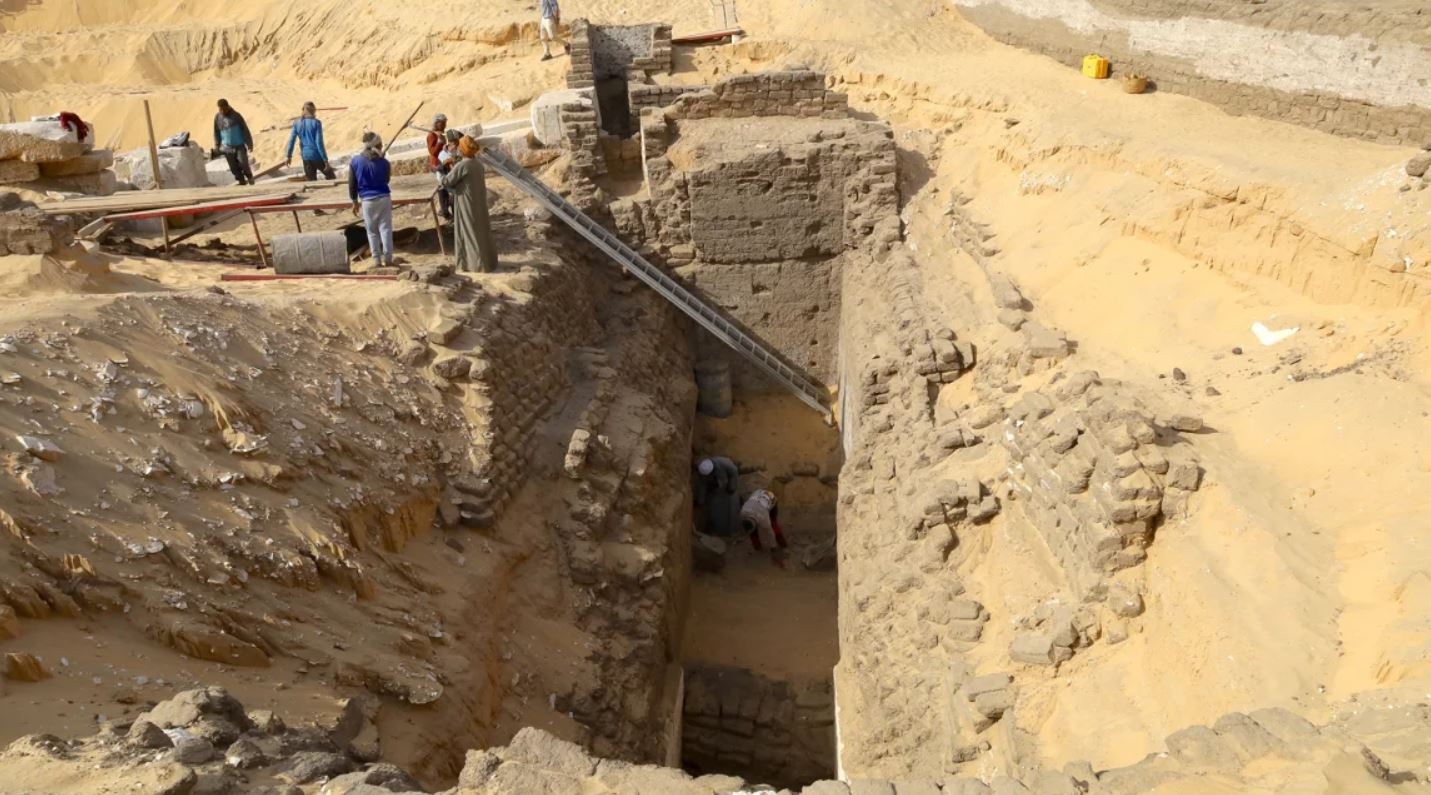Archaeologists have uncovered an ancient Egyptian tomb belonging to a mysterious, unnamed pharaoh — a discovery that could reshape our understanding of one of the least known royal dynasties in Egypt’s long and storied history.
Revealed earlier this year in Abydos, Egypt, the limestone burial chamber — featuring multiple rooms and a richly decorated entrance — dates back approximately 3,600 years. Despite its grandeur, the identity of the tomb's royal occupant remains a mystery.
According to a press release from the Penn Museum at the University of Pennsylvania, grave robbers had destroyed the hieroglyphic text painted on the mudbrick entrance, rendering the name illegible. No skeletal remains were found inside the tomb to aid in identification.
A Pharaoh from Egypt’s Fragmented Past
Researchers believe the tomb likely belonged to a pharaoh who ruled Upper Egypt during the Second Intermediate Period (circa 1640–1540 BCE). This was a time of political fragmentation, and the king may have been part of the Abydos Dynasty — one of the most obscure royal lineages in ancient Egyptian history.
“This is a very enigmatic dynasty that seems to have essentially vanished from Egypt’s historical records due to the political turmoil and fragmentation of the time,” said Dr. Josef Wegner, Egyptologist and professor of Egyptian archaeology at the University of Pennsylvania, who led the excavation.
“This mysterious tomb opens a whole new line of investigation into the Abydos Dynasty.”
The newly discovered tomb is the largest known burial site attributed to any ruler from this elusive dynasty. Experts say it sheds light on a poorly understood period in Egyptian history, one that is being gradually pieced together through archaeological evidence rather than written records.
The Lost Pharaoh
The tomb was found about seven meters below ground in an ancient royal necropolis located on Mount Anubis in Abydos. This pyramid-shaped natural formation was considered sacred by the ancient Egyptians and used to conceal royal burials built beneath it.
Historically, Abydos was revered as the final resting place of Osiris — god of the underworld — and was the favored burial ground of Egypt’s earliest pharaohs. Over centuries, successive dynasties continued to expand the necropolis, building tombs for their kings.
More than a decade ago, Wegner and his team discovered the first tomb in the area that confirmed the Abydos Dynasty's existence — a theory originally proposed in 1997 by Egyptologist Kim Ryholt. Ryholt suggested that a smaller, regional dynasty ruled the Abydos area during a time when Egypt was divided into rival kingdoms.
Only One Tomb With a Name
Of the eight tombs from this dynasty unearthed so far, only one has preserved the name of its occupant: King Senebkay. He was a previously unknown pharaoh whose name did not appear in any historical records.
The recently discovered tomb resembles Senebkay’s in both architecture and decoration, but is significantly larger. Its central burial chamber includes three rooms, stretching nearly 6 meters long and 1.9 meters wide.
Because it is located in an older section of the necropolis, researchers believe the tomb may belong to a predecessor of Senebkay. Two possible candidates are King Snaaib and King Pantjeny — both mentioned sparingly in surviving Abydos inscriptions.
However, Wegner notes it's entirely possible the tomb belonged to an otherwise unknown pharaoh. “We don't believe we have all the names of the Abydos kings — the record for them has not survived consistently,” he said.
Though no identifying inscriptions have survived, the tomb does feature painted images of the goddesses Isis and Nephthys, traditionally depicted mourning the dead during funerary rituals.
Excavation Efforts Continue
Wegner’s team plans to excavate an additional 10,000 square meters of desert in hopes of finding more royal tombs. “There could easily be 12 to 15 kings in this group,” he said.
In addition to ongoing excavation, the team will employ ground-penetrating radar and other advanced mapping technologies to explore what lies beneath the surface.
Shedding Light on a “Dark” Chapter of Egyptian History
“The discovery of another ruler from the Abydos Dynasty is tremendously exciting,” said Dr. Salima Ikram, Distinguished University Professor of Egyptology at the American University in Cairo, in an email.
“It confirms the existence of a significant royal cemetery from that time and offers valuable insight into royal tomb architecture. It also helps piece together the lineage and succession of this obscure dynasty.”
Although Ikram was not involved in the excavation, she expressed hope that future digs will unearth more tombs to help “further our understanding of this once-shadowy period of Egyptian history.”
Rewriting Egyptian History
Pharaohs of the Abydos Dynasty — like Senebkay — are notable for their absence from the ancient Egyptian king lists, which were often curated to present a simplified, unified view of the nation’s history.
“Egyptian kings liked to portray their history as linear and uninterrupted,” said Dr. Laurel Bestock, associate professor of archaeology at Brown University in Rhode Island. “These kings aren’t on those lists.”
She added that the official records were often written to support the political narratives of later rulers who reunified Egypt. “They wrote themselves as the great victors who won national wars and essentially erased the smaller players.”
Discoveries like the new Abydos tomb are “incredibly exciting,” Bestock noted, as they provide a fuller, more nuanced picture of ancient Egyptian history — even if the identity of the tomb’s occupant remains unknown.
For Wegner, the ultimate goal is to one day put a name to this forgotten ruler and secure their place in the historical timeline.
“With archaeology, you’re always hoping for that one piece of evidence,” he said. “The archaeological record has a way of surprising you — you never know what might turn up next.”







